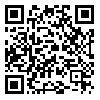Volume 1, Issue 1 (2013)
CLRJ 2013, 1(1): 141-159 |
Back to browse issues page
Download citation:
BibTeX | RIS | EndNote | Medlars | ProCite | Reference Manager | RefWorks
Send citation to:



BibTeX | RIS | EndNote | Medlars | ProCite | Reference Manager | RefWorks
Send citation to:
Farsian M R, Dorpa M. Tolstoy's Influence on the Manifestation of “Love” in the Novel Jean-Christophe. CLRJ 2013; 1 (1) :141-159
URL: http://clrj.modares.ac.ir/article-12-6645-en.html
URL: http://clrj.modares.ac.ir/article-12-6645-en.html
1- Assistant Professor, Department of French Language and Literature, Ferdowsi University of Mashhad, Iran
2- M.A., Department of French Language and Literature, Ferdowsi University of Mashhad, Iran
2- M.A., Department of French Language and Literature, Ferdowsi University of Mashhad, Iran
Abstract: (9512 Views)
One of the important topics in many literary works is “love”. In the literature, the authors have provided specific definitions for love. Many of the authors have drawn virtual love and some others have pictured a real one. Among the writers whose works have addressed the issue of love is the Russian writer and the great thinker, Tolstoy. Between 1880 and 1904, when the shadow of moral crisis was over the world, Tolstoy founded a new religion by presenting a new definition of love, and presented a new definition of faith and morality according. Romain Rolland, the French writer, reading the works of Tolstoy and thinking about them, was fascinated by the opinions of this Russian author. After getting familiar with Tolstoy’s religion and morality, which was indicative of the real love, Rolland tried to reflect his beliefs in his works and present a new picture of love. The best example of his religious beliefs is the novel Jean-Christophe. In this study, first we are going to get familiar with Tolstoy’s religious and moral beliefs though defining his new religion, and then study the manifestation of love on his novel Jean-Christophe by using those beliefs.
Received: 2012/05/5 | Accepted: 2012/08/12 | Published: 2013/03/21
| Rights and permissions | |
 |
This work is licensed under a Creative Commons Attribution-NonCommercial 4.0 International License. |








